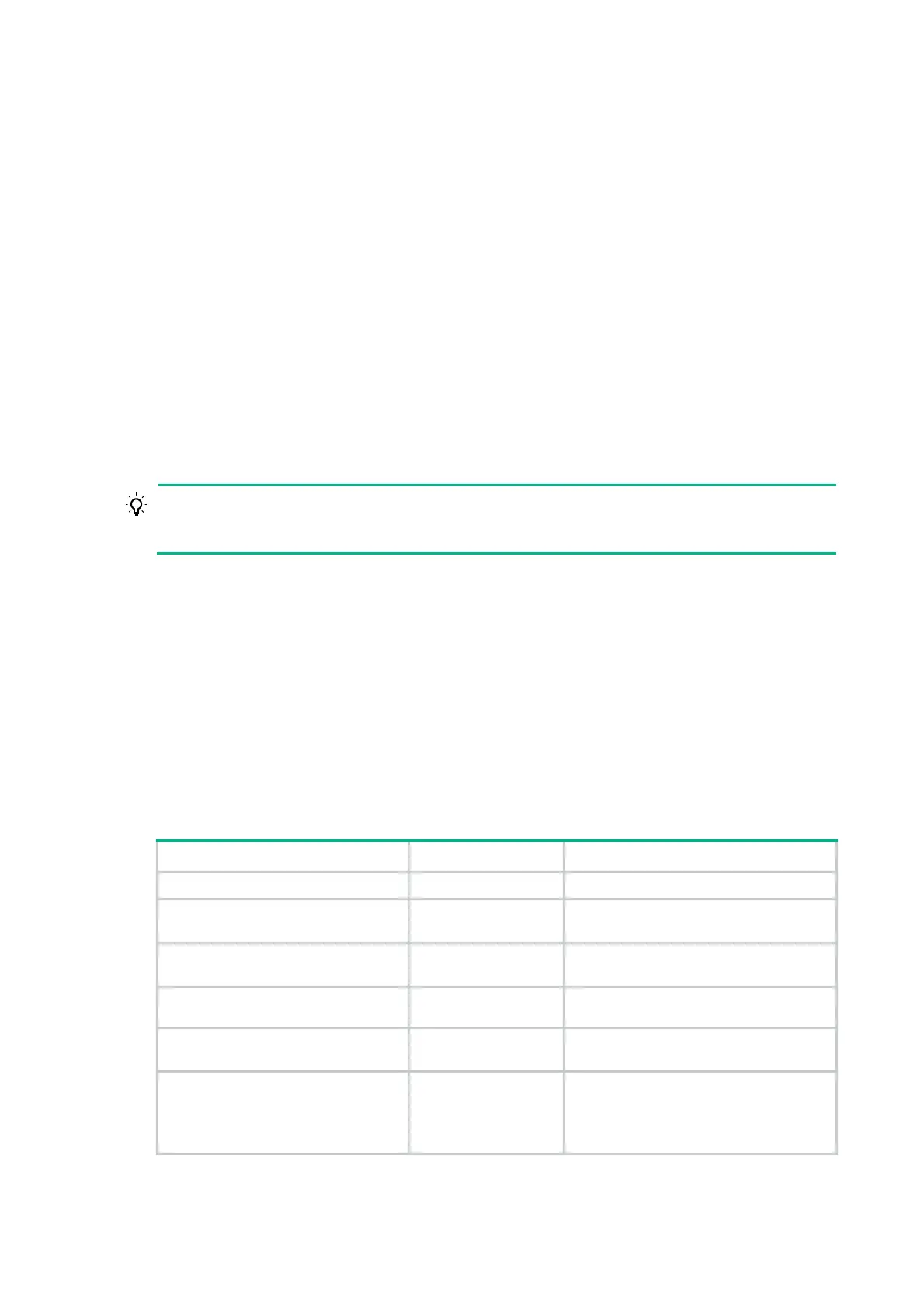128
• gnudip://—The TCP-based GNUDIP server.
• oray://—The TCP-based DDNS server.
The domain names of DDNS servers are members.3322.org and phservice2.oray.net. The domain
names of PeanutHull DDNS servers can be phservice2.oray.net, phddns60.oray.net, client.oray.net,
ph031.oray.net, and so on. Determine the domain name in the URL according to the actual situation.
The port number in the URL address is optional. If no port is specified, the system uses the default
port numbers: port 80 for HTTP, port 443 for HTTPS, and port 6060 for PeanutHull DDNS server.
The system automatically performs the following tasks:
• Fills <h> with the FQDN that is specified when the DDNS policy is applied to an interface.
• Fills <a> with the primary IP address of the interface to which the DDNS policy is applied.
You can also manually specify an FQDN and an IP address in <h> and <a>. In this case, the FQDN
that is specified when the DDNS policy is applied to an interface will not take effect. As a best
practice, do not manually change the <h> and <a> because your configuration might be incorrect.
For more information about applying DDNS policies, see "Applying the DDNS policy to an interface."
No FQ
DN or IP address can be specified in the URL address for update requests sent to the
PeanutHull DDNS server. You can specify the FQDN when applying the DDNS policy to an interface.
The IP address is the primary IP address of the interface to which the DDNS policy is applied.
TIP:
The FQDN is the only identification of a node in the network. An FQDN consists of a local host name
and a parent domain name and can be translated into an IP address.
Configuration prerequisites
Visit the website of a DDNS service provider, register an account, and apply for a domain name for
the DDNS client. When the DDNS client updates the mapping between the domain name and the IP
address through the DDNS server, the DDNS server checks the following:
• Whether the account information is correct.
• Whether the domain name to be updated belongs to the account.
Configuration procedure
To configure a DDNS policy:
Step Command Remarks
1. Enter system view.
system-view
N/A
2. Create a DDNS policy and enter
its view.
ddns policy
policy-name
By default, no DDNS policy is created.
3. Specify a URL address for DDNS
update requests.
url
request-url
By default, no URL address is specified
for DDNS update requests.
4. Specify the username for logging
in to the DDNS server.
username
username By default, no username is specified.
5. Specify the password for logging
in to the DDNS server.
password
{
cipher
|
simple
}
string
By default, no password is specified.
6. (Optional.) Specify the
parameter transmission method
for sending DDNS update
requests to HTTP/HTTPS-based
method
{
http-get
|
http-post
}
By default,
http-get
is used.
Use the
method
http-post
command to
specify the POST method for DDNS
update with a DHS server.

